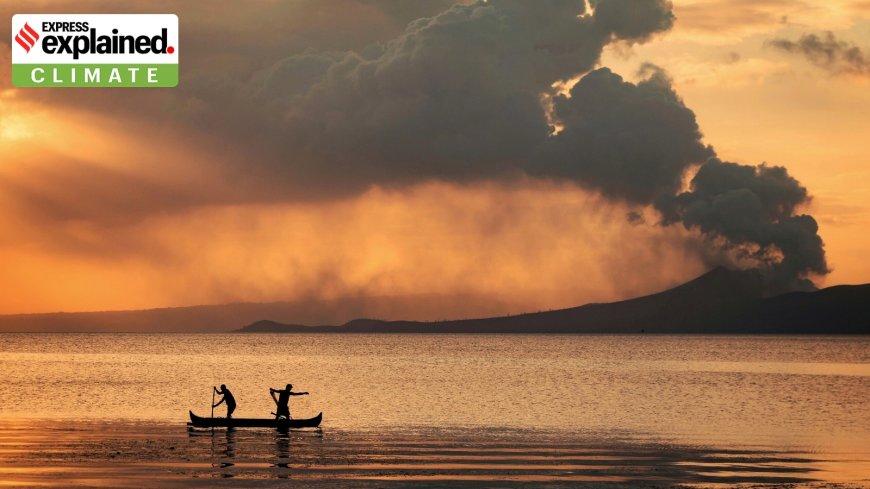How Melting Glaciers Can Trigger More Volcanic Eruptions
Research suggests that as glaciers and ice caps melt, there could be an increase in explosive volcanic eruptions. The risk is particularly high in West Antarctica, where around 100 volcanoes are hidden under thick ice. Other regions like North America, New Zealand, and Russia may also experience heightened volcanic activity.

The rise in melting glaciers and ice caps can result in more frequent and more explosive volcanic eruptions, according to a new study. The greatest risk of a resurgence of volcanic eruptions lies in West Antarctica, where approximately 100 volcanoes are buried under thick ice. This ice is expected to disappear in the coming decades and centuries due to soaring global temperatures.
The research was presented at the 2025 Goldschmidt Conference in Prague, the largest international conference dedicated to geochemistry. Other continental regions like parts of North America, New Zealand, and Russia could also observe an increase in volcanicity, as mentioned by Pablo Moreno-Yaeger from the University of Wisconsin-Madison.
Scientists have long suggested that melting ice could affect volcanic activity by reducing pressure on underground magma chambers when glaciers or ice caps melt. This can lead to explosive eruptions as underground gases and magma expand. The decrease in pressure due to ice loss can also result in the production of magma, as rocks held at lower pressure tend to melt at lower temperatures. Precipitation, modified by climate change, can infiltrate deep underground and trigger eruptions, according to Thomas Aubry from the University of Exeter.
A recent study examined Chile’s Mocho Choshuenco volcano and found that the thick ice sheet over the volcano suppressed eruptions between 26,000 and 18,000 years ago. Once the ice sheet melted about 13,000 years ago, explosive eruptions occurred. Volcanic eruptions can cause temporary cooling by releasing ash or dust into the atmosphere, which blocks sunlight. They also emit sulfur dioxide, which cools the climate by forming sulfuric acid aerosols in the stratosphere.
However, sustained volcanic eruptions can release greenhouse gases like carbon dioxide and methane, contributing to global warming. This can create a vicious cycle where rising global temperatures lead to more ice melting, more eruptions, and further warming of the planet.
According to the source: The Indian Express.
What's Your Reaction?
 Like
0
Like
0
 Dislike
0
Dislike
0
 Love
0
Love
0
 Funny
0
Funny
0
 Angry
0
Angry
0
 Sad
0
Sad
0
 Wow
0
Wow
0














































































































































































